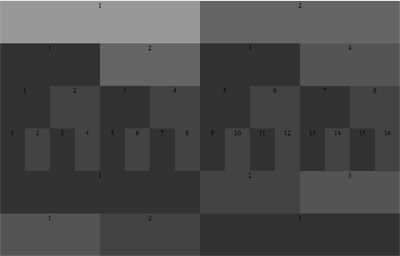
In the left corner: Tyler Tate’s 1KB CSS Grid, a lean framework sporting 14 classes and the familiar conventions for enforcing a visual grid via CSS.

In the right corner: Vladimir Carrer’s 1-line CSS Grid, an experimental framework sporting a single class to cut nested column widths in half. The solution is mindblowingly brilliant, but does it work? Design tends to work in thirds, not halves. You decide.
Whether or not it’s a coincidence I chanced upon these two extremely simple CSS grid frameworks just days apart, news of these two solutions makes the CSS framework “scene” a lot more interesting. And accessible. I can imagine many front-end developers shying away from heavyweight frameworks because there are too many features, most of which won’t be utilized, and there are too many conventions, most of which aren’t easy to remember.
I’m not even going to get into how using these frameworks leads to unsemantic, presentational class names and lots of <div> soup reminiscent of <table>-based layouts. Let’s just be glad people are streamlining the application of design principles for the Web, namely grid layouts. When a better way comes out—maybe it’ll be display:table, maybe it won’t—we’ll adjust then.
In the meantime, we need to let our arsenal evolve. Balance out the spectrum with lightweight frameworks like these. Then add diversity as well. Look at the Javascript libraries—the tiny moo.fx, the venerable Prototype and Scriptaculous, and the designer darling jQuery—each one caters to a specific need. What other kind of grid frameworks do we need? Fluid? Do-it-yourself? Highly reputable? Unobtrusive? Oh, what will they think of next?
Originally posted on July 18, 2011 @ 4:11 am